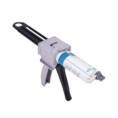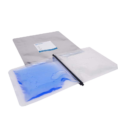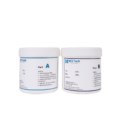The Complete Guide to Silicone Potting Compounds: 7 Key Advantages, Limitations, and Selection Strategies
1. In-Depth Analysis of Core Advantages of high-temperature silicone potting compound
✅ 5 Irreplaceable Properties
- Extreme Temperature Adaptability (-60°C to 300°C)
- Case Study: Automotive’s Battery Management System uses specialty silicone to withstand 130°C peak temperatures during charge/discharge cycles.
- Permanent Elastic Recovery
- Test Data: >98% rebound rate after 1,000 compression cycles at 50% strain (ASTM D395).
- Electrical Insulation Stability
- Parameter Comparison: Volume resistivity >1×10¹⁵ Ω·cm, 100x higher than epoxy resins.
- Chemical Inertness
- Corrosion Resistance: Passes 48-hour acid/alkali/salt spray tests per ISO 16750-5.
- Exceptional Signal Transparency
- RF Applications: <0.2dB signal attenuation at 2.4GHz (ideal for mmWave radar encapsulation).
⚠️ 3 Key Limitations
-
- Mechanical Strength Constraints
- Typical Values: Tensile strength 1-5MPa, <1/10 of epoxy resins.
- Surface Adhesion Challenges
- Solution: Requires primers (e.g., AP-133 for aluminum substrates).
- Cost Sensitivity
- Price Range: High-performance grades cost 3-5x more than polyurethanes.
- Mechanical Strength Constraints
2. Industry-Specific Solution Matrix
|
APPLICATION
|
TECHNICAL CHALLENGE
|
SILICONE MODIFICATION STRATEGY
|
COMPLIANCE STANDARD
|
|---|---|---|---|
|
NEV Electronics
|
Thermal shock-induced cracking
|
MQ resin-enhanced low-T flexibility
|
GB/T 2423.22
|
|
Deep-Sea Sensors
|
High-pressure moisture ingress
|
Phenylsiloxane hydrophobicity boost
|
IP68 Certification
|
|
5G Base Station Modules
|
Signal transmission loss
|
Nano-silica dielectric tuning
|
IEC 61189-2
|
|
Medical Devices
|
Biocompatibility requirements
|
Platinum-catalyzed systems
|
ISO 10993-5
|
3. 4-Step Precision Selection Methodology (With Flowchart)
Step 1: Operational Parameter Quantification
- Record temperature profiles (recommended tool: Fluke Ti480 thermal imager).
- Analyze vibration spectra (recommended sensor: PCB Piezotronics 356A01).
Step 2: Material Property Matching
- Key Parameter Prioritization Tool:
Thermal conductivity >0.8W/mK → Alumina-filled gradeUL94 V-0 flame resistance → Aluminum hydroxide compositeOptical transparency required → 1.41 refractive index gra
Step 3: Process Compatibility Verification
- Automated Lines: Match thixotropic index (TI) to dispensing equipment.
- Manual Operation: Balance pot life vs. cure speed.
Step 4: Certification Compliance Check
- Automotive: IATF 16949 documentation.
- Solar: UL 746C RTI certification.
- Military: MIL-A-46146D compliance.
4. Emerging Technology Trends
- Self-Healing Silicones (2024 CES Innovation Award Winner)
- Feature: Microencapsulated healing agents repair 3mm cracks at 120°C.
-
- Breakthrough: 0.5Pa·s fluidity penetrates <0.1mm gaps (ideal for micro-inductors).Ultra-Low Viscosity Grades
- Low-Carbon Formulations
- Data: Bio-based siloxanes reduce carbon footprint by 42% (EPD certified).















